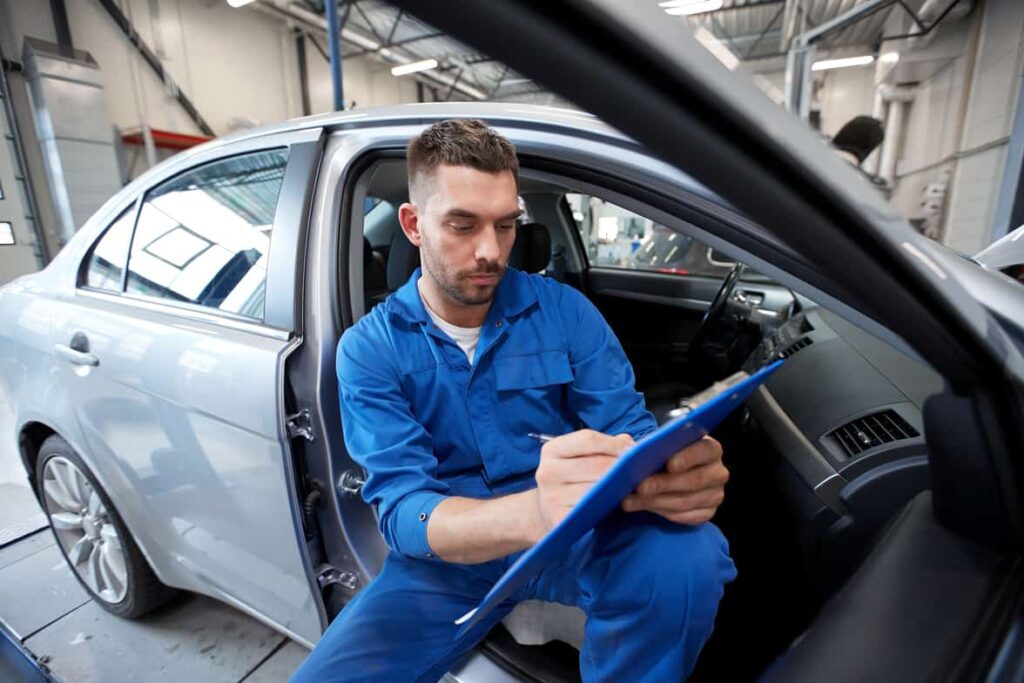25 May 2018 Concept Car
Have you heard about the term CPO and are wondering what it is all about? Or are you already convinced it’s right for you and thinking about buying a certified pre owned car? Either way, you’ve arrived at the right place. In this expansive article, we’ll cover everything you need to know about a CPO. We’ll give you an introduction into the topic, cover the many benefits and the disadvantages of this option – and fill you in on the alternatives.
One thing’s for sure: CPOs are quickly turning into one of the most popular buying options. Sandwiched in between new and used cars, they seem to offer the best of both worlds. Some have even referred to them being in the ‘goldilocks zone’. And their popularity is still increasing, especially among a younger generation of drivers.
As reported by leading car site Jalopnik, new millennium car buyers are willing to pay almost $4,000 (roughly 3,000£) on top of the regular second hand price for a certified pre owned vehicle. And although older buyers aren’t quite that impressed by the benefits, they, too, would shell out an additional $2,700.
To understand what the craze is all about, let’s first explain what the term CPO actually means. Simply put, a certified pre owned car is a second hand vehicle that has passed a thorough, standardised quality check. If the car fails any of the criteria on the list, it is refurbished and repaired, until it meets all of the standards. This test is usually performed directly by the manufacturer. At the very least, it is performed by a certified dealer using the brand’s criteria.
Compared to a used model, a certified pre owned car has been outfitted exclusively with original parts. A CPO car usually comes with a better warranty than a used car, too, although the exact details may differ.
In essence, you are buying a used vehicle that feels like new and offers more security. No wonder, then, that so many UK buyers are excited about the prospect.
Of course, you might wonder, how dealers can satisfy the demand for all these certified pre owned vehicles. The solution is pretty simple: For one, certified pre owned vehicles are ‘recruited’ from the ranks of leasing vehicles. Since leasing is still extremely popular, especially for business cars, there are usually plenty of models to chose from.
And then, there are all the cars sold via PCP agreements. As part of these contracts, you agree to either buy the car at the end of the lease term – typically three years – or return and trade it in against a new model. Because of their low deposit and attractive conditions, PCPs have quickly turned into Britain’s most popular car financing option. And since most customers prefer getting a new car after three years to keeping their old one, these vehicles can subsequently be sold on as CPOs.
A CPO sound great, as mentioned. But the general idea is not exactly new. Dealers have been certifying cars for many years and they still do. So why should you opt for a certified pre owned model, which will usually be more expensive than a dealer certified competitor?
Dealer certifications don’t need to be a bad proposition. In fact, many of them are quite decent and offer good value for money. The problem is that the process is extremely opaque and you will need to invest a lot of research to find out what kind of services, exactly, have been performed.
As we will see, CPOs are also not quite as easy to understand as some believe. But they do offer a certain minimum quality standard, which can be reassuring.
The vehicle inspection check list, for example, often closely resembles those used by The AA or the RAC. This means they’re as thorough as an inspection by an independent expert. And as we already mentioned, only original parts are used in the certification process, which offers additional peace of mind.
Whatever you decide, it is usually advisable to stay away from dealers that offer both their own certification and perform CPO procedures. This can create conflicts of interest, after all, which may be detrimental to your future car.

This is perhaps the most important question of all when it come to CPOs. And yet, very few buyers could tell you the answer. Which may be surprising at first. After all, most manufacturers offer their checklists for free download online. And yet, it is easy to see why so many people ignore them. For one, vehicle checklists are long. And secondly, they’re tedious.
Going through the 150 points of a typical list might be a smart thing to do. But very few people can muster the patience to read a document that makes many legal papers seem as exciting as Harry Potter.
In our big special on the best vehicle inspection checklists, we provide an overview of what different check lists include.
Usually, however, the topics covered include:
That said, not all CPO inspection lists are identical. To put it more bluntly, they are all slightly different. And to make matters worse, the differences don’t stop there. Essentially, each car make has its own CPO conditions. So if there’s one thing that can drive customers crazy when it comes to the certification system it’s that there is as yet no single standard to compare the offering of different manufacturers. And it’s not likely that there will be one, soon.
The result is that some certified pre owned cars are decidedly better than others. Porsche is usually praised for offering the possibly best CPO program on the market. Its warranty is very inclusive, cars are brought to the best possible standards and the service is excellent. However, in the unlikely case that you’re seriously considering buying one of their CPO cars, you should know that the program can include cars which are up to eigth years old. That is roughly twice the age most other manufacturers would allow.
In general, though, the warranty is the biggest point of contention. With some marques, it will be expansive and cover you in many instances. With others, only a few parts are included. As you can see, the benefits of a CPO car will vary considerably from case to case.
That said, certified pre owned vehicles can be pretty great. So let’s take a look at the many advantages that CPOs have to offer:
CPOs aren’t perfect, however. A certified pre owned can offer more peace of mind, but it also comes with a few disadvantages of its own:
If you pay attention to a few basic guidelines when looking for a suitable used car, however, you may be able to get an equally good or even better deal than by opting for a certified pre owned version.

If you are still convinced that CPO is the way to go, here are a few recommendations to get the most out of it:
Whether or not a certified pre owned car is worth its price is ultimately up to you to decide. But there’s one last thing you should know:
Manufacturers won’t tell you this, but the average used car is in a pretty good condition. Although dealers don’t always subject them to extremely thorough testing, they do refurbish them and try to make them look as good as possible. Since modern vehicles are built to last, a three to four year old car will feel almost as good as new anyway, although it may not have that factory new smell on it anymore.
Also, most drivers use their car with consideration and care. The problem, ironically, is not your average family car driver, who mainly uses the car to take his kids to school and go shopping. The real issue are business managers who’ll rack up high mileages and drive at insane speeds on the highway or in the city.
If you’d like to see just how great a regular used car can be, do take a look at our digital showroom. All of these cars are in top shape and have been refurbished to look and feel incredible. And if you have any questions, just drop us a line or give us a call.
25 May 2018 Concept Car